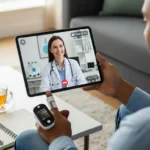Key Points
- Wireless energy transmission is advancing, promising a future free of tangled cords and drained batteries.
- Building on Nikola Tesla’s vision, modern engineers use resonant electromagnetic fields to transmit electricity over distances without physical connections.
- Wireless power transfer could make charging cables obsolete, allowing devices to charge seamlessly in any environment and reducing electronic waste.
- Despite advancements, efficient long-distance transmission, safety, and standardization remain key areas for development in wireless energy transmission.
In a remarkable stride towards an untethered world, wireless energy transmission has emerged as a beacon of innovation, propelling us closer to a future where the hassle of tangled cords and depleted batteries becomes a thing of the past. This groundbreaking technology could reshape how we power our devices, vehicles, and even entire cities.
Tesla’s unfulfilled dream of transmitting electricity wirelessly over vast distances now sees the light of day. Building upon Tesla’s early work, modern scientists and engineers craft systems that harness resonant electromagnetic fields to transmit energy without needing physical connections. The future stands on the brink of a new energy era that pays homage to Nikola Tesla’s genius while propelling his vision into the 21st century.
Picture a world where charging cables are obsolete and walking into a room automatically powers up your gadgets. Wireless energy transmission, often called wireless power transfer (WPT), is making this dream a reality. By harnessing the principles of electromagnetic fields, this technology enables electricity to be transmitted through the air over short to medium distances without physical connections.
One of the most promising wireless energy transmission applications is consumer electronics. Imagine smartphones that charge while sitting on your desk, laptops that gain power from Wi-Fi signals, and smartwatches that draw energy from the ambient environment. It eliminates the inconvenience of constantly seeking power outlets and contributes to reducing electronic waste by prolonging the lifespan of batteries.
Beyond individual devices, wireless energy transmission has the potential to reshape urban landscapes. The concept of wireless charging roads for electric vehicles is gaining traction. It allows cars to recharge as they drive, effectively extending their range and reducing the need for frequent charging stops.
Similarly, public spaces like parks and cafes could become charging hubs, where visitors effortlessly charge their devices while on the go. While the prospects are exciting, challenges remain to be addressed. Efficient power transmission over longer distances, safety concerns related to electromagnetic radiation, and standardization across devices and systems are areas requiring continued research and development.
Nevertheless, the march towards a wire-free future is relentless. Companies and researchers are investing heavily in refining wireless energy transmission technologies. From resonant inductive coupling to radio frequency-based systems, various methods are explored to find the most efficient, convenient, and safe means of transmitting energy through the air.
As wireless energy transmission steadily progresses from concept to reality, the days of hunting for charging outlets and grappling with snarled cables may soon be over. With the potential to effortlessly power our devices and infrastructure, this transformative technology is set to illuminate the path toward a more connected and wire-free world.





